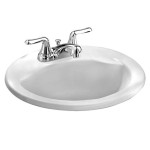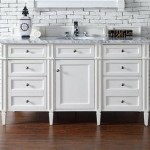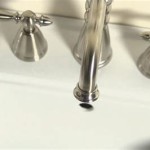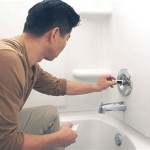Can You Use Lino in Bathrooms?
Lino, short for linoleum, is a durable and aesthetically pleasing flooring option often considered for various areas around the home. But when it comes to bathrooms, a room known for its moisture and potential for spills, questions arise about its suitability. While linoleum is often associated with kitchens and hallways, it can indeed be used in bathrooms, but with careful consideration of its properties and potential limitations.
Lino's Advantages and Disadvantages in Bathrooms
Linoleum offers several benefits that make it an attractive choice for bathrooms. It is a natural material, composed of linseed oil, wood flour, and other natural ingredients, making it environmentally friendly and often chosen by individuals seeking eco-conscious options. Its durability also makes it suitable for high-traffic areas, including bathrooms, as it can withstand heavy foot traffic and occasional spills. Lino is relatively easy to clean, resisting stains and bacteria, and can be maintained with regular sweeping, mopping, or vacuuming.
However, linoleum does have some drawbacks that should be considered when using it in bathrooms. Unlike some water-resistant flooring options, linoleum is not completely waterproof. While it can handle occasional spills and splashes, prolonged exposure to excessive moisture can lead to warping or damage. Therefore, careful installation and maintenance are crucial to ensure its longevity in a bathroom environment.
Key Considerations for Using Lino in Bathrooms
To effectively utilize linoleum in bathrooms, several key points must be addressed:
1. Moisture Control
Moisture control is paramount when using linoleum in bathrooms. Proper ventilation is essential to minimize moisture buildup. Adequate ventilation can be achieved through the use of exhaust fans or windows. Ensure the bathroom is well-ventilated, especially after showers or baths, to prevent excessive humidity that could damage the linoleum.
2. Installation and Maintenance
Proper installation is crucial for the longevity of linoleum in bathrooms. Ensure the subfloor is level and dry before laying the linoleum tiles or sheets. A skilled installer can ensure proper adhesion and sealing to minimize the risk of moisture penetration. Routine maintenance is equally important. Regularly sweep or vacuum the floor to remove dirt and debris. When mopping, use a mild cleaner and avoid soaking the floor.
3. Choosing the Right Lino
Not all linoleum is created equal. Choose linoleum specifically designed for bathrooms or high-moisture areas. Some linoleum varieties have special coatings or treatments that enhance their water resistance and durability. These might be slightly more expensive but offer greater protection against potential moisture damage.
4. Alternative Flooring Options
While linoleum can be a viable option for bathrooms, alternative flooring materials offer greater water resistance and may be more suitable in certain situations. Options like ceramic tile, porcelain tile, or vinyl flooring are known for their superior moisture resistance and are often preferred in bathrooms that experience high levels of moisture or frequent spills.
Ultimately, the decision to use linoleum in a bathroom depends on individual preferences, budget, and the specific needs of the space. By carefully considering the advantages, disadvantages, and key considerations outlined above, homeowners can make an informed decision about whether linoleum is the right choice for their bathroom flooring.

How To Lay Vinyl Floor In A Bathroom Dove Cottage

Vinyl Planks In Bathrooms Residential Inspiration Flooring

Linoleum Bathroom Floors

How To Lay Vinyl Floor In A Bathroom Dove Cottage

Bathroom Vinyl Flooring What To Know Before You Buy

Bathroom Vinyl Flooring What To Know Before You Buy

Laminate Vs Linoleum Bathroom Flooring Which Is Better

Diy Painted Linoleum Bathroom Floor House By Hoff

How To Paint A Vinyl Or Linoleum Floor The Right Way Postcards From Ridge

Best Natural Floors For Bathrooms Naturlich Flooring
Related Posts







